
The power outlets, such as generator receptacles or sockets, which are interchangeable, are not easy to direct. It would have been nice to have one universal electrical outlet that can serve the purpose, but that’s not happening.
Nonetheless, we have covered all the necessary information in this article that you want to know about power outlets and generator receptacles for your portable generator. This article will tell you how outlets are classified and a detailed list of each outlet, along with the important safety features while operating a portable generator.
What kind of outlet does a generator use?
Portable generators come in many different voltages and can supply power as 12 volts DC, 120V AC, or even 240 volts! But not all models are capable of providing more than one type. Some have a single outlet; others have duplex outlets supplying both with power.
What If There Are Multiple Outlets Instead of a Single Outlet?
There is a list of several generators within our database, which you can explore by scrolling down. Generators are well-equipped with numerous generator receptacles. The generator receptacles provide power to the generators to make them operational.
Every generator has a different number and type of generator receptacles. Therefore, the generator owner should know about it before purchasing to avoid any disturbance.
Similarly, if you have a portable generator, you must understand the outlets, their uses, and their importance. You should also know how it’s rated and its key features.
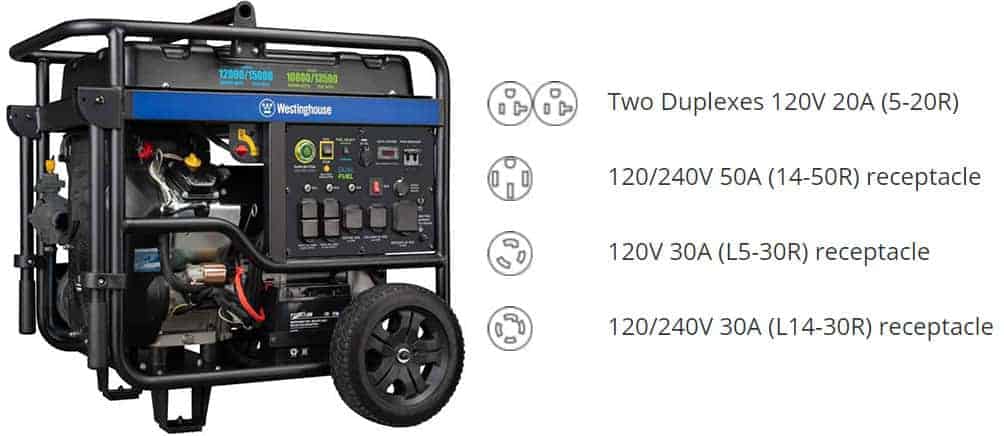
have a fair amount of outlets
To have various outlets on a generator is not by choice; instead, multiple designs of outlets have different motives. They intend to efficiently deliver power to the appliances shown in the wiring schemes.
The choice of AC receptacles and plugs comes under NEMA Standards. They ensure every company doesn’t produce outlets while adversely affecting the end-user. NEMA is a trade association that regulates the standards. It is not a government authority. Likewise, the same rule doesn’t apply to the DC outlet.
Under NEMA Segregations, How are Receptacles Named?
Each of you has come across various plugs and receptacles in unique shapes. In Northern America, they differently shaped the connectors normally like NEMA 5-15R.
The standard NEMA outlets are different for technical and practical use and deliver a different type of current with great compatibility. It is done to ensure compatibility along with preventing turbulence and potential mishap.
People may often get intimidated by a code like NEMA 5-15R because of its range of numbers. There is a need to bifurcate them.
Bifurcate the Connector Names
All the connectors are classified as designed by considering the amperage, voltage, grounding, phasing, and the amount of wiring or prongs.
All the structured parameters are present in NEMA electrical code that has four different identifiers or variables, as shown below:
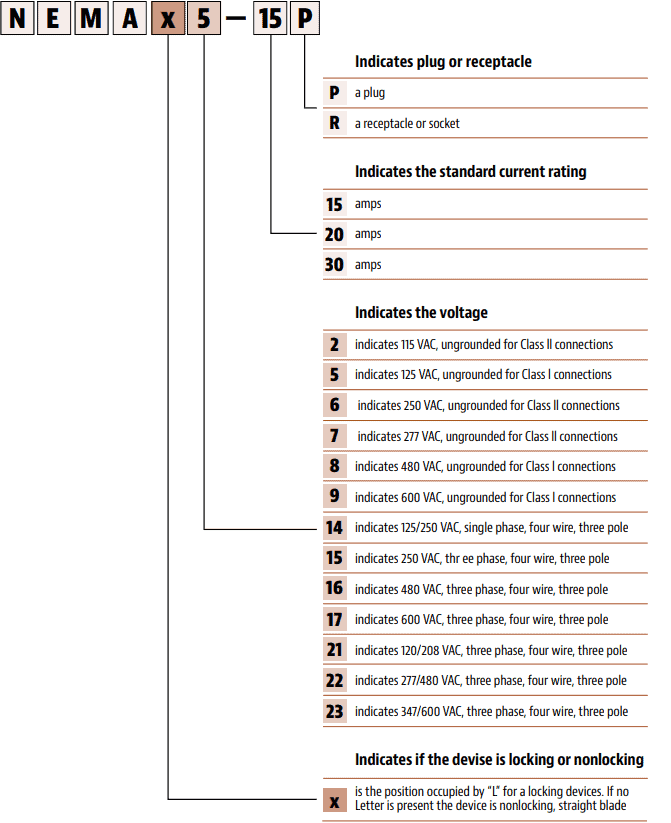
The 2nd identifier indicates the voltage and other information, such as whether the connection is grounded, the number of its poles, wires, and the current phase.
The 3rd identifier indicates the numerical value of the current (amps) that the outlet is rated for.
The 4th identifier indicates whether the “connector” is a plug P or receptacle R.
The breakdown of the descriptors has made things pretty simple and easier to understand. However, the second one is loaded with trickier information but doesn’t need to worry about.
You may encounter NEMA 1, 5, 6, 10, and 14 plugs and receptacles in our day-to-day lives. At the same time, NEMA 5 and 14 receptacles are relevant to portable generators.
Do all generators have GFCI outlets?
All new Generators must have GFCI Protection to be in compliance.
AC Receptacles and Portable Generators:
The following is a rundown of portable generators’ various AC generator receptacles. Please note that this is not the complete list of new and existing used household and industrial connectors.
Connectors for NEMA 5 (120 V)
NEMA 5 plugs and generator receptacles are three-wire (hot-neutral-ground) grounding devices rated for a maximum voltage of 125 V. they are generally known as 120 V plugs/sockets due to their common nominal voltage. NEMA 1 plugs can be used with NEMA 5 receptacles, while NEMA 5 plugs cannot be used with NEMA 1 receptacles. NEMA 1 and NEMA 5 connectors have the same design and rating, but NEMA 1 connectors are not grounded, unlike NEMA 5 connectors (check the manufacturer of the individual appliances before plugging in.
NEMA 5-20R Outlets
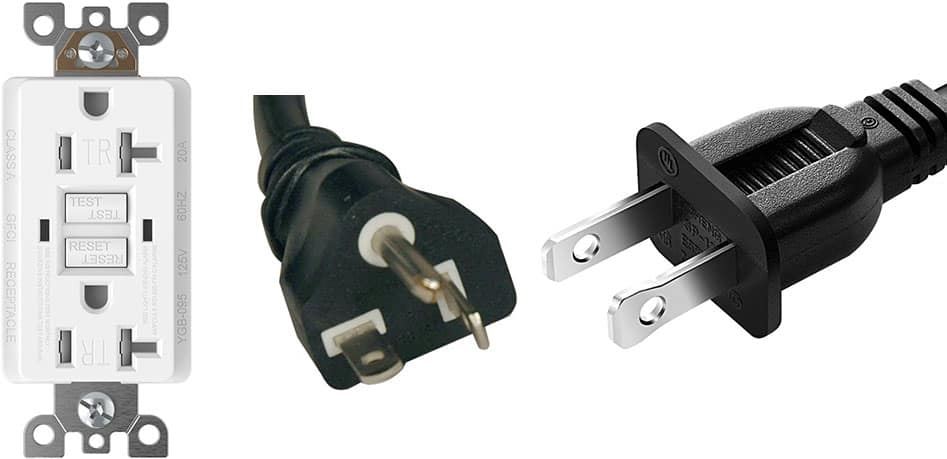
NEMA 5-20R is a standard 120 V/20 A residential outlet used in households. It has a maximum power output of 2400 W.
The conventional NEMA 5-20R outlet can accept both NEMA 5-15P and NEMA 5-20P plugs, while modified slots on 5-20R generator receptacles that exclusively accept NEMA 5-20P plugs are rare.
The same is true for NEMA 1 plugs, which are highly compatible with higher voltage fluctuations. NEMA 5-20R outlets are typically sold as duplexes, which share a single circuit breaker and, in certain cases, GFCI protection. The following NEMA 5 receptacles may be found on portable generators:
Outlets NEMA L5-30R and L5-20R
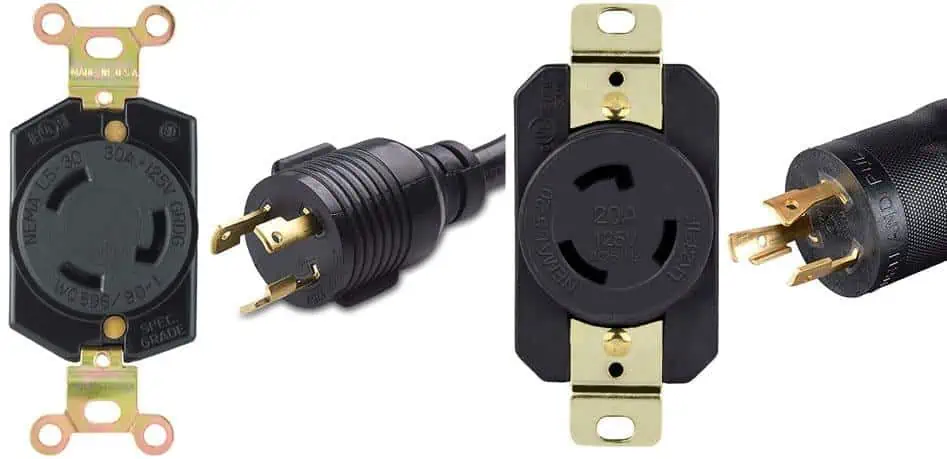
Twist-lock 120 V/20A and 120 V/30A outlets, NEMA L5-20R and L5-30R, respectively, provide the power of up to 2400 W and 3600 W if they are connected in the same order. Without an appropriate adaptor, twist-lock-equipped plugs and receptacles are incompatible with their non-twist-lock counterparts.
NEMA L5-30R receptacles are commonly found in docks and campgrounds, which connect vessels (boats, RVs, and other vehicles) to shore power. Although some RVs are only equipped with NEMA TT-30R outlets, with a suitable adaptor, NEMA L5-30R can be utilized to power them.
NEMA L5-30R and L5-20R are used in extension cords, such as lawnmowers and hedge trimmers, to guard against accidental disconnection, moisture, and other hazards.
NEMA TT-30R Outlets
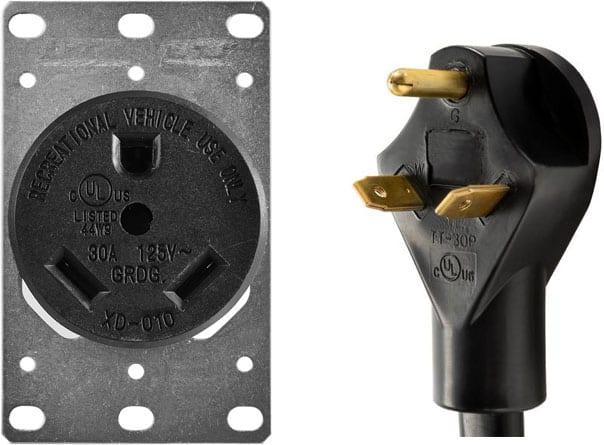
NEMA TT-30R is a 120 V/30A modified NEMA 5-30R receptacle commonly used in RVs and trailers. It has a maximum power output of 3600 W.
RV Ready generators are those that have these receptacles.
As previously stated, an appropriate adapter can connect NEMA L5-30, 5-30, and TT-30 connectors (please reference relevant manufacturers’ literature before doing so).
Connectors NEMA 14 (120/240V)
NEMA 14 plugs and receptacles are four-wire (hot-hot-neutral-ground) grounding devices rated for a maximum voltage of 250 V. They are more often known as 120/240V plugs/sockets due to their customary nominal voltage. These connectors can give two distinct voltages (shown by the slash) due to their four-wire architecture that includes two hot connections. Furthermore, NEMA 14 connectors may accept a three-phase 120/208V power source, though this is not commonly applied and is unrelated to portable generators.
In the same way as NEMA 1 and NEMA 5 connections are upwards compatible (opens in a new tab), NEMA 10 connectors are upwards compatible (opens in a new tab) with NEMA 14 connectors. Nevertheless, we highly suggest against it because it necessitates extra resources and grounding measures.
Portable generators are also available with the listed done NEMA 14 receptacles:
Outlets NEMA 14-50R

NEMA 14-50R is a 120/240V, 50A receptacle that can offer power of up to 12,000 W.
Demanding devices, like electric cooking ranges, are often powered by this outlet.
NEMA 14-50 connectors are used to power huge RVs, which are too large for NEMA TT-30 connectors to handle.
Outlets NEMA L14-30R and L14-20R

Twist-lock 120/240V, 30A and 120/240V, 20A receptacles, NEMA L14-30R and L14-20R, accordingly. They can deliver up to 7200 W or 4800 W in the same order.
NEMA L14-30 connectors are often utilized to connect home backup generators to transfer switches and to power household items that require 240 V. NEMA L14-20 connectors, on the contrary, are unusual. An appropriate adaptor can connect both connections to their non-twist-locked counterparts.
Outlet NEMA SS2-50R
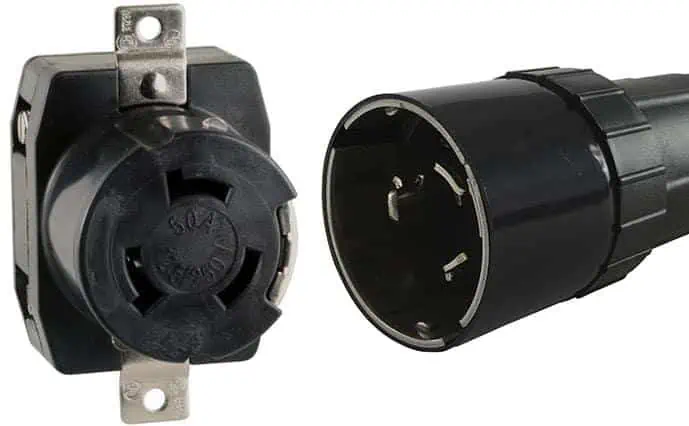
The NEMA SS2-50R is a 50A; 120/240V twist-lock receptacle uncommon in most portable generators. However, it does appear to be frequently used to connect boats to shore power.
.NEMA SS2-50 connectors must be adaptable to NEMA 14-50 connectors based on their specifications, although we recommend double-checking with the necessary manufacturers’ information before using it.
One of the few portable generators with this outlet is the Honda EB10000.
Portable Generators and DC Receptacles
While NEMA has a complicated set of stable and dependable standards, they are only applicable to AC outlets. On the other end, DC outlets come in many sizes (opens in a new tab). Even the best DC connections have a vast range of voltages and amps that rely on where they are used. As a result, always double-check the specifications of your power supply and appliances before connecting them!
Receptacles 12V DC
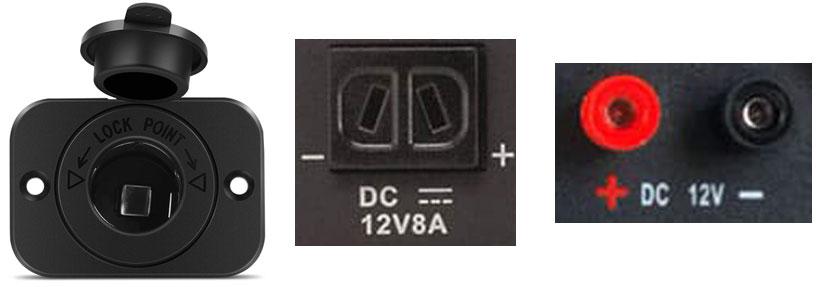
12V DC connectors are available in multiple shapes and sizes. Some of the various flat or cylindrical connectors, banana connectors, and sometimes even 12 V automotive auxiliary power outlets are often used in portable generators. Small devices, batteries, and electronics such as sensitive devices, phones, laptops, tablets, and others also can be powered.
It’s worth noting that DC connector design varies significantly, and even connectors that appear identical on the surface may have varied pin designs, lengths, and diameters. Additionally, the supplied current of 12 V DC connectors might differ tremendously. To ensure your devices are appropriate, look up the connector’s specific requirements in the user manual.
USB Ports (5 V)
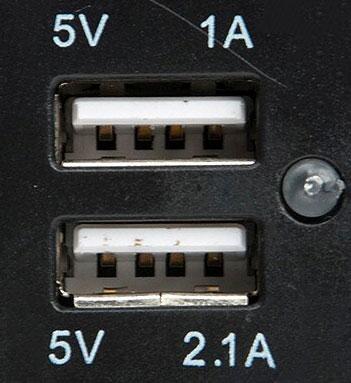
In recent years, Portable generators have luckily followed the habit of adding USB ports in their control panels. Even though most DC-powered electronics are USB compatible, this eliminates the major compatibility problems with DC outlets.
Perhaps USB ports can vary significantly in terms of the amps they produce. The majority of devices can handle 1.0A of current. Meanwhile, USB outlets with a current of 2.1A or greater are prevalent, which may or may not be compatible (opens in a new tab) with some small devices with ancient circuitry, like vape pens, wireless headphones, and so forth. Consequently, your gadgets may fail to charge or charge at inexcusably slow rates.
Given the present advancements in USB charger technology, it could also be said that the supplied voltage, even for low-voltage devices, is becoming more common.
Additional Outlets
Ultimately, our list would be incomplete if it didn’t include the outlets we designated as “other.” These outlets are entirely unstandardized, differing by manufacturer and even model.
Parallel Ports
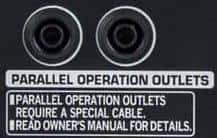
Parallel ports are typically found on inverter generators. As the name indicates, these connect two or more generators parallel to increase the power delivered to a circuit.
“Parallel capable” generators are those that have parallel ports. A parallel kit containing all the necessary parts for a parallel configuration is frequently not included in the package. It must be purchased separately (you can find this information in our generator datasheets).
Proprietary Outlets
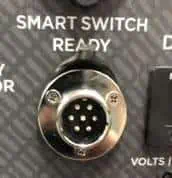
feature of some generators
Other proprietary ports for various accessories are included on certain generators, which are generally developed specifically for a model or a series.
Welding generator outlets for welding equipment and home backup generator outlets for proprietary transfer switches are the finest representation of these proprietary outlets.
Generator Receptacles: Things to think about
The final piece of this analysis emphasizes many vital electrical outlet characteristics while using a portable generator.
Outlet Protection, GFCI, and others
Outlets may be secured by a multitude of protection systems that are intended to optimize the user’s and the equipment’s security. These are some of them:
Receptacles GFCI

When a new ground connection forms in a circuit, which is identified by an imbalance between incoming and outgoing current, a GFCI (ground fault circuit interrupter) receptacle disconnects the power supply. GFCI receptacles are normally duplex and come with a test and reset button.
The power supply is turned off, and the reset button slips out when the circuit is tripped. By re-inserting the button, electricity is restored.
The test button disrupts the grounding and is used to check the GFCI circuit’s operation. This test should be performed regularly as part of your routine maintenance.
Tamper-Proof Receptacles
Tamper-resistant receptacles (opens in a new tab) are designed to prevent direct contact with the wires from the outside. It eliminates the risk of shock when manually tampering with them. The National Electrical Code has enforced this design for all domestic receptacles since 2008 that are frequently used in portable generators. The initials “TR” are used to identify them.
Weather Resistant Receptacles
They are UV-resistant, cold-resistant, and moisture-resistant generator receptacles. The National Electrical Code has authorized them for all outside, moist, and wet situations since 2008. Although they are difficult to spot in user manuals, they must be installed in most portable generators. The letters “WR” are used to identify them.
Furthermore, manufacturers have introduced covered outlets to improve the longevity of the generator receptacles. Rubber covers are often made up of robust, lightweight, and moisture-resistant rubber.
Circuit Breakers
Circuit breakers (opens in a new tab) safeguard equipment and people by tripping the circuit. If an excess current is detected, an overload or a short circuit can trigger that. The basic difference between circuit breakers and GFCI is the contrast between the two-term “surge” and “excess” of energy.
The basic difference between circuit breakers and GFCI is the contrast between the two-term “surge” and “excess” of energy. It is crucial because a GFCI unit will likely trip when the power is turned on, whereas a circuit breaker will not (or, instead, is less likely). A GFCI, on the other hand, is more likely can save you if a blow dryer falls in a bathtub.
Portable generator manufacturers may use circuit breakers to limit the power of their machines. For instance, if a 6000 W (beginning watts) generator is equipped with a NEMA L14-30R receptacle rated for up to 7200 W, the supply can be reduced by switching from a 30A to a 25A circuit breaker. While using it, the user must keep it in mind.
Last but not least, with the exception of duplexes, it is normal to have independent circuit breakers for every receptacle. As a consequence, a NEMA 5-20R duplex is limited by a single 20A circuit breaker, which implies that the shared 20A limit will apply to each receptacle’s current.
Final Words:
In the end, we’ve discovered that portable generator receptacles come with a range of media, how they’re categorized, and how they vary. We found that AC outlets follow the NEMA nomenclature system and have broken down their naming pattern into various segments. NEMA 5 and NEMA 14 are the most frequent generator receptacles used in portable generators with their own capabilities and applications.
We’ve also gone over some of the most prevalent DC outlets, the protections built into them, and the effect circuit breakers have on the current pulled from them.


